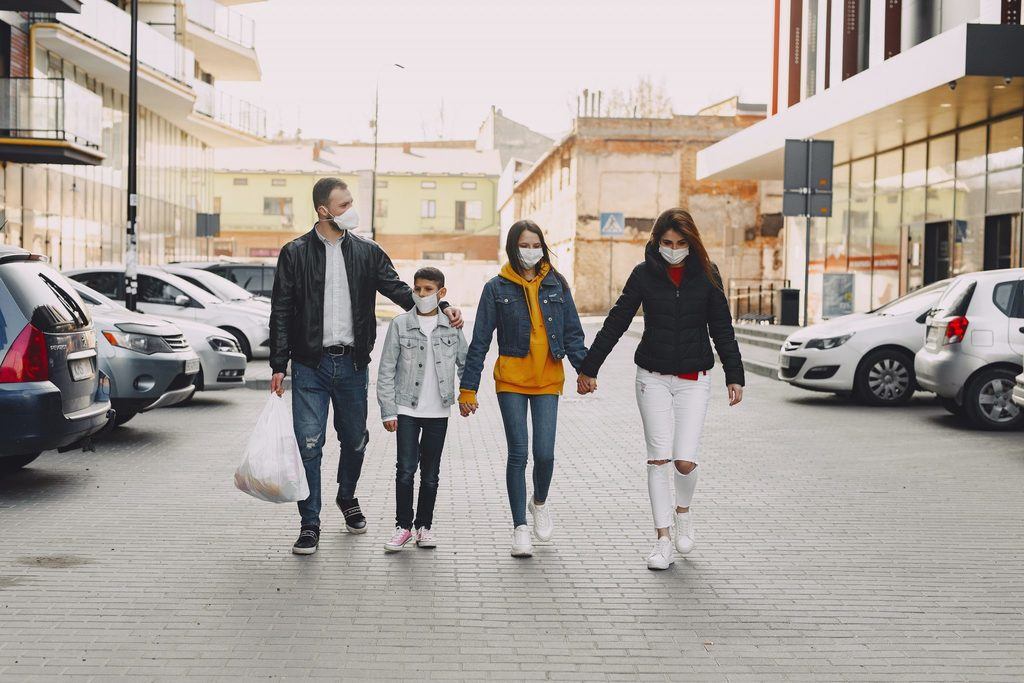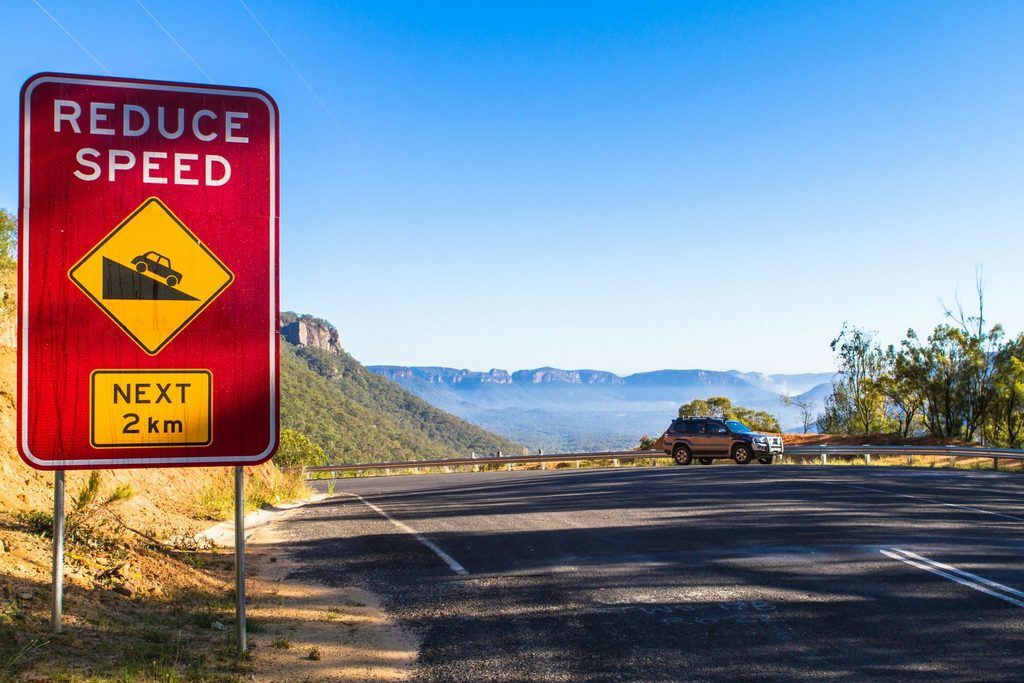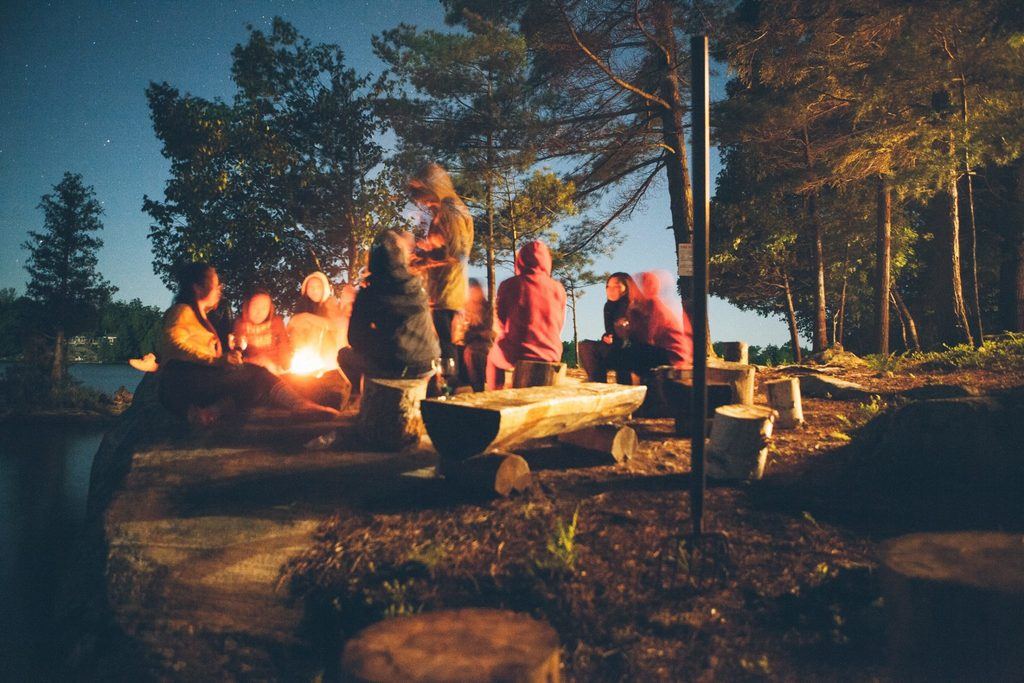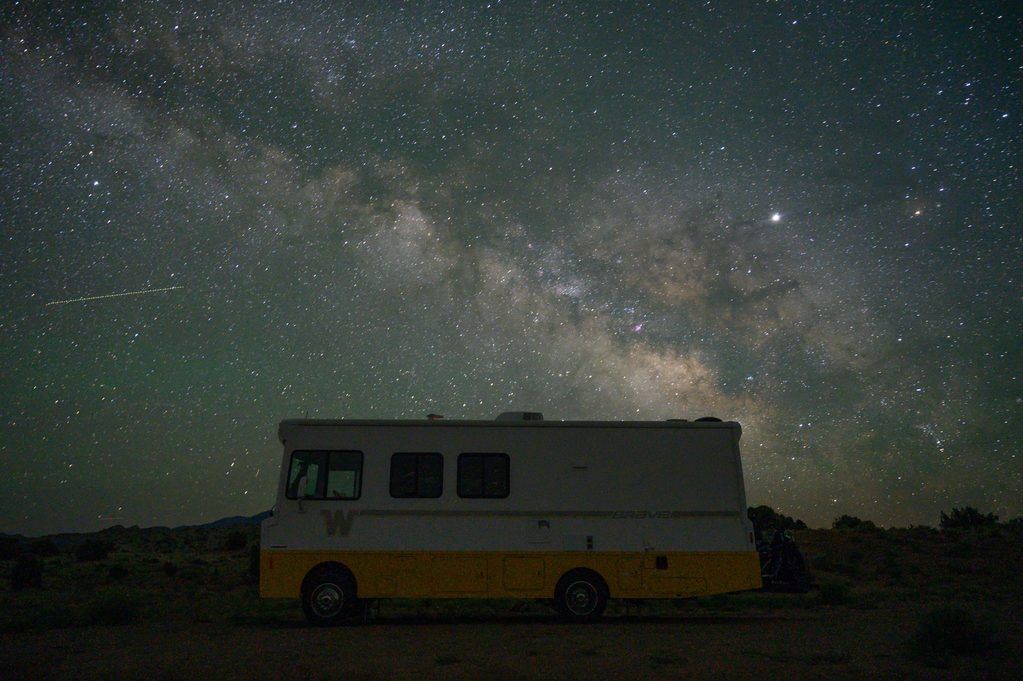The history of Recreational Vehicles (RV) is terrific, but RV travel safety has a new meaning in 2020.
People began converting cars, vans, and trucks into camping vehicles almost as soon as the invention of automobiles. The first official RV was made in 1910, making RVs 110 years old.
When the Pierce-Arrow Touring Landau rolled off the assembly line, it had almost modern amenities. The back seat became a bed. A phone system connected the chauffer to the passenger compartment.
Also hidden behind the driver’s seat was a small sink. Outhouses weren’t prevalent then, so Pierce-Arrow even thought to include a chamber pot (ewwwww).
It wasn’t long before pull-behind trailers began to roll off the assembly line. Camping has been a popular family activity ever since. But how do you enjoy camping in the middle of a pandemic?
This year, RV travel safety changed from checking tire air pressures to packing extra masks and disinfectant wipes. But you can still camp and keep your family safe.
Recommended Read: Blue Driver Review and Essential Information
What RV Travel Safety Means
RV travel safety previously meant performing mechanical and equipment checks on gear, but 2020 has brought about a change in definition.
COVID-19, or the Coronavirus, has swept around the world, creating a shift in lifestyle for everyone.
Since the virus will be around for a bit, we must adapt to continue living our lives while also trying to safeguard ourselves and our families. The best method of staying safe is by staying at home and not traveling.
Unfortunately, after six months of modified “lock-down,” we are all experiencing a bit of cabin fever. As we re-evaluate the meaning of safe travel, our packing list will also change.
There are several things that you can do to remain safe while traveling. The chances of coming into contact with a contagious person greatly increase while you are traveling.
We mentioned face masks and disinfectant wipes earlier. You may also need hand sanitizer, disinfectant soap, extra clothing, extra food supplies, a thermometer, and additional tissues.
[amazon fields=”B08BVX9Z9Z” value=”thumb” image_size=”large”]
[amazon fields=”B08BVX9Z9Z” value=”button”]
Another factor not many people consider is a change in the itinerary to decrease person-to-person contact.
Skip that tourist attraction that everyone else is visiting. Opt for a quiet hike on an almost deserted trail for a safer adventure.
The new definition of RV travel safety means rethinking how we pack and how we plan. Keeping a mind on where we go, who we will meet along the way, and what we will pack to keep ourselves as safe as possible.
Don’t skip checking the air in the tires though — you still need to do that too.

What the Government Says About COVID-19
When we say the “government,” we are referring to the Center for Disease Control (CDC). While you may hear differing versions and recommendations elsewhere, the CDC is still the authority on infectious diseases.
The most general recommendation from the CDC is to stay home. Most of us have been doing that, but the desire to travel is rearing its head. Therefore, if you must travel, the CDC recommends:
- Find out the level of COVID-19 at your intended destination
- Check numbers for each state you will be passing through
- Determine if you or a family member are at an increased risk
- Find out restrictions/requirements at your destination
Although that is a fundamental list, it should put you on a path to retooling your thoughts as you pack and prepare. Keep a mind to safety and exercise common sense.
Being aware of local requirements for masks or other personal protective equipment (PPE) is a good start.
Recommended Read: Protect Your Hands With the Best Steering
Wheel Cover
How to Find Out State Safety Requirements
While traveling around within the United States, each state has its own set of rules and restrictions regarding COVID-19. Checking each state is where your research skills will come in handy.
Start at the CDC listing for State & Territorial Health Department Websites. You will find a list of links to every state and territory health department website.
If you are visiting any tribal lands during your journey, you can find rules for those areas on the CDC’s Tribal Health website.
Regardless of the individual state requirements, at a minimum, you should follow the basic travel guidelines of the CDC for safer travel:
- Wear a mask covering your nose and mouth in any public space
- Maintain social distancing of at least 6 feet from all persons not in your household
- Wash your hands often or use a good quality hand sanitizer
- Avoid contact with anyone that is visibly sick
- Don’t touch your face — nose, mouth, and eyes
These necessary steps limit your potential exposure to COVID-19. But they will not offer you 100 percent safety.
If you or a family member is in the high-risk category, the CDC recommends not traveling.
Additional resources:
- Map of active restrictions on travel by each state on Ballotpedia
- Travel restrictions under an executive order by state governors
- Listing of campgrounds open or closed due to COVID-19
Avoid travel to and through areas where the infection levels are high. Once you are at your destination camping site, stay there rather than touring the local venues. Safety measures won’t protect you if you act recklessly while traveling.
Be courteous in your travels. Remember that everyone is a potential victim of this virus. CDC guidelines are the bare minimum to keep your family and others safe.

Planning RV Travel Safety into Your Itinerary
One of the advantages of RV travel is that you can travel more and stop less. By carrying travel food and using the restroom in your RV, you can avoid many public areas.
But you still park in RV parks during the night, and you will need gasoline.
Although you won’t be 100 percent protected, there are a few things you can do at fuel stops to lessen your exposure:
- Pay at the pump to avoid contacting other people directly
- Use disinfecting wipes on the pump handle and keypad before use
- Apply hand sanitizer after fueling or wash with soap and water for 20 seconds
- Take the extra time to wash again when you arrive at your destination
[amazon bestseller=”disposable face masks” items=”3″]
If you make food stops, use curbside pickup options where available (because most drive-thru lanes can’t accommodate your RV’s height). Eat your meals in your RV or outside settings away from other people.
In packing, remember to include enough of any medications for the trip (add two extra days for emergencies and dropsies).
Pack food, water, pet food, and other amenities to allow you to avoid unnecessary shopping excursions. Masks, hand sanitizer, and disinfecting soap were already mentioned, but it never hurts to double up.
When planning activities during your RV vacation, keep safety in mind. Be aware of any hot spots for COVID-19 along your travel route.
Avoid large social gatherings or areas where many people are congregating. Save that boat tour for next summer, or a later time when the risk factors are lower.
If you have been exposed to a person who has or had COVID-19, please stay home. Be aware of the symptoms and seek medical attention if you experience any of them.

Keeping the Kids Safe While Traveling
Traveling with children can present challenges without the added risks of COVID-19.
Younger children may not understand the importance of keeping a face mask on. Little Johnny sneezes, and your 4-year-old instinctively says, “bless you” as you cringe and reach for the hand sanitizer.
Believe it or not, children are more adaptable than adults. Don’t shame or try to scare them into compliance. Be honest and tell them the truth.
Yes, COVID-19 is bad and can make us very sick, but wearing our masks can keep us safer.
While on the road, select less populated areas to allow your children to stretch their legs and run and play a bit. With GPS readily available on cell phones, don’t be afraid to explore some lesser-known roads along the way.
Although more challenging, traveling with children can be an excellent adventure for the entire family. Keep the disinfecting wipes and hand sanitizer close and have fun!

Pack It Up and Move It Out
As people venture out, RVs are taking a front seat over air travel. The advantages are many, and RV parks are stepping up to ensure safety in their parks.
Among the advantages of RV travel:
- Using pay-at-the-pump means no personal interaction
- There are off-grid camping areas throughout the country
- Self-contained restroom facilities
- Food storage and prep is in your control
- No worries about contamination in hotel rooms
- No worries about canceled flights or recirculated airplane air
Even if you don’t own an RV, there are plenty available for rental at reasonable prices. While you should sterilize a rental RV, once you do that, you can enjoy the other benefits.
After your trip, you should plan on staying home in at least semi-quarantine for 10 to 14 days. No matter how safe you were during your trip, there is still a possibility that you encountered COVID-19.
Keep an eye out for any symptoms and seek medical attention immediately if you start to feel ill.
RV travel can be safe and enjoyable for the entire family. With a few safety precautions, planning, and exercising common sense, you can have a great vacation.
Enjoy your trip!